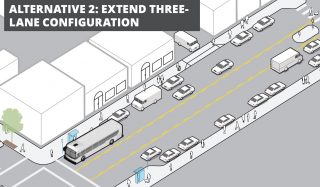
In all the hullabaloo around today’s big Hawthorne Boulevard decision from the Portland Bureau of Transportation, let’s not lose sight of the plans that will be built this summer and the analysis that led PBOT to make their decision.
If you recall back in September, PBOT graciously went back to the drawing board to refine two alternatives for Hawthorne between 22nd and 50th. One (Alternative 2) would change Hawthorne from two general lanes in each direction and one parking lane west of Cesar Chavez, to three lanes general lanes (one center-turn lane) and auto parking on both sides for the entire length. The other (Alternative 3) would create a cross-section with two general lanes, two bike lanes, and two parking lanes.
PBOT chose Alternative 2, a decision they explained in a 10-page report released today.
They spent three months garnering more feedback on the project and doing surveys. They found “broad support” for making changes and safety emerged as the top priority. Of all survey respondents, Alternative 2 received the most support. Notably, PBOT says support for Alternative 2 was strongest among people who live nearby and/or who take the Line 14 bus from the Lents neighborhood through the Hawthorne corridor.
What about people who live outside those two areas? Most of them supported the bike lane options.
Advertisement
Bus service delays were a major concern throughout this project. The 8-16 minute estimated delay found in PBOT’s initial analysis is what led them to score Alternative 3 (bike lanes) so much less favorably than Alternative 2. This wasn’t a simple bus service equation. The fact that many riders come from east Portland — designated as “equity areas” on PBOT maps — gave the city major concerns about how any changes might impact the speed of their trip (recall that when former Commissioner Chloe Eudaly launched the Rose Lane Project she did so with the specific purpose of speeding transit trips for riders of color).
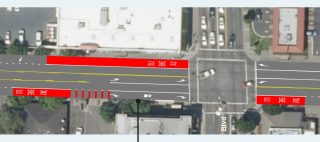
As we reported earlier, the sticky point in the delay estimate appeared to come from only one intersection: Cesar Chavez Blvd.
Armed with their initial evaluation, added feedback and surveys, PBOT spent October through January doing more technical analysis. One thing they looked at was whether they could refine Alternative 3 to include a combined bus/bike mixing zone at Cesar Chavez to alleviate the estimated transit delay. This option would have put bicycle users, transit operators and car drivers in the same lane for one block on each side of the intersection (image right).
In the end, PBOT chose Alternative 2 because they believe it’s the best choice for safety, walkers, transit users, emergency vehicle operators, climate and equity outcomes, and because it would allow more flexible uses of the curb zone (a key element for the walking environment).
PBOT expects crashes to fall by 29% with the new lane configuration. The addition of concrete median islands is expected to reduce crashes even further, as much as 50% in the few intersections they’ll be installed.
PBOT has never done the four-to-two lane change that Alternative 3 called for. But since it wouldn’t have allowed turn lanes, PBOT said they “would not expect a decrease in left turn crashes.” It’s difficult for PBOT to predict how the presence of bike lanes and their many users would impact crashes and safety on the street. They are comfortable predicting crash impacts of protected bike lanes, but since none of the alternatives would allow for physical protection at intersections, they estimated Alternative 3 would not reduce as many crashes at Alternative 2.
Advertisement
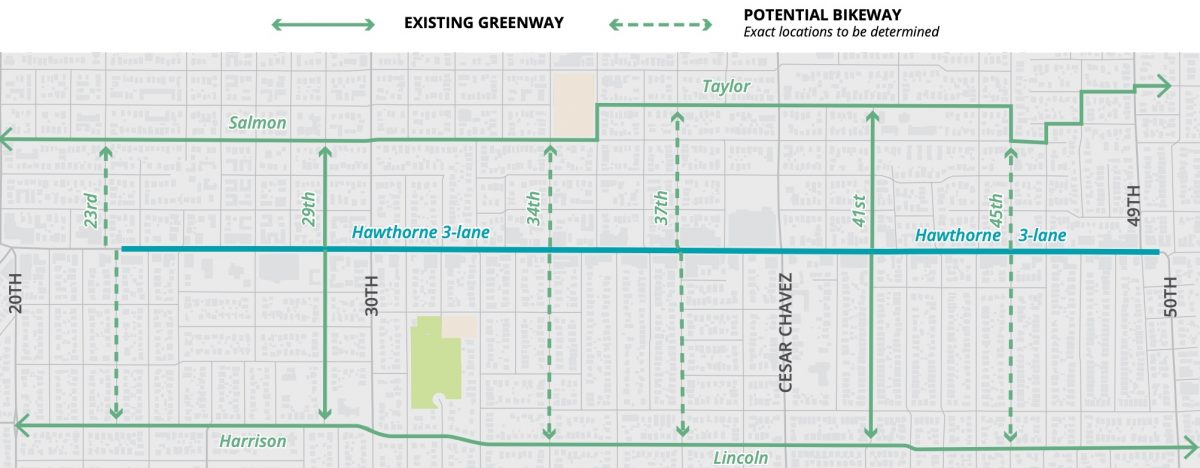
In the end, Alternative 2 also scored highest because PBOT says it best supports speed and reliability of the bus line. Their new analysis of the mixing zone section reduces some of the transit delay that plagued the bike lane option in the initial evaluation, but it doesn’t do enough. In Alternative 3, PBOT states, “Buses would be delayed by turning vehicles at side streets and driveways along the corridor, with the most significant delay caused by left-turning vehicles blocking the through lane in Alternative 3. We expect some additional delay caused by right-turning vehicles yielding to bicyclists.”
While bike lanes won’t be coming to Hawthorne as part of this project, it’s likely biking to-and-from Hawthorne — and even on it — will become better. PBOT said they will request a 20 mph speed limit on the length of the corridor, which will make sharing the lane with drivers much easier. And in the most bike-consequential bit of today’s news, PBOT has promised new “closely-spaced north-south neighborhood greenway connections” as part of Alternative 2. In addition to new low-stress biking treatments on 23rd, 34th, 37th and 45th (29th and 41st are already considered greenways), PBOT will add signage/markings and bike parking where the routes cross Hawthorne. “Once this expanded network is fully established, all destinations along Hawthorne will be within roughly a three-block walk from a designated bikeway,” says the report.
In addition to the lane striping, PBOT has identified 11 intersections for median islands. Four of them — at 23rd, 35th, 36th and 38th — are listed as “high priority” for funding. These new islands would be added to the two existing islands at 43rd and 48th. How many get built depends on the budget, which PBOT will figure out in the coming months.
One point of concern is that the new lanes will be wider than they are now. They will go from 9 feet to up to 12-feet wide.
Speaking of space, many folks are curious why a full-scale on-street parking removal wasn’t considered. PBOT answered this question back in September when asked by the city Bicycle Advisory Committee (which meets tonight at 6:00 pm). PBOT said parking removal would not impact traffic delay or diversion given the many pinch-points due to curb extensions already on the street. They also point to Hawthorne’s “Civic Main Street” classification that says, “curb zone uses such as parking… are very important and should be considered high priorities in addition to moving people.”
In the end, today was a disappointment in many ways: The opportunity to create space for cycling on such an important commercial street is extremely rare. But for what started in 13 months ago as just a paving project with only the tiniest inkling that bike lanes would be considered, turned into a much more robust discussion about cycling and the need for more safe space on main streets.
But changing the lane configuration on one of Portland’s marquee commercial streets — while adding more median islands, setting up the street for rapid bus service, creating the potential of slower speed limits (please ODOT?!), better bike connections and bike parking — are all solid steps forward.
— Jonathan Maus: (503) 706-8804, @jonathan_maus on Twitter and jonathan@bikeportland.org
— Get our headlines delivered to your inbox.
— Support this independent community media outlet with a one-time contribution or monthly subscription.


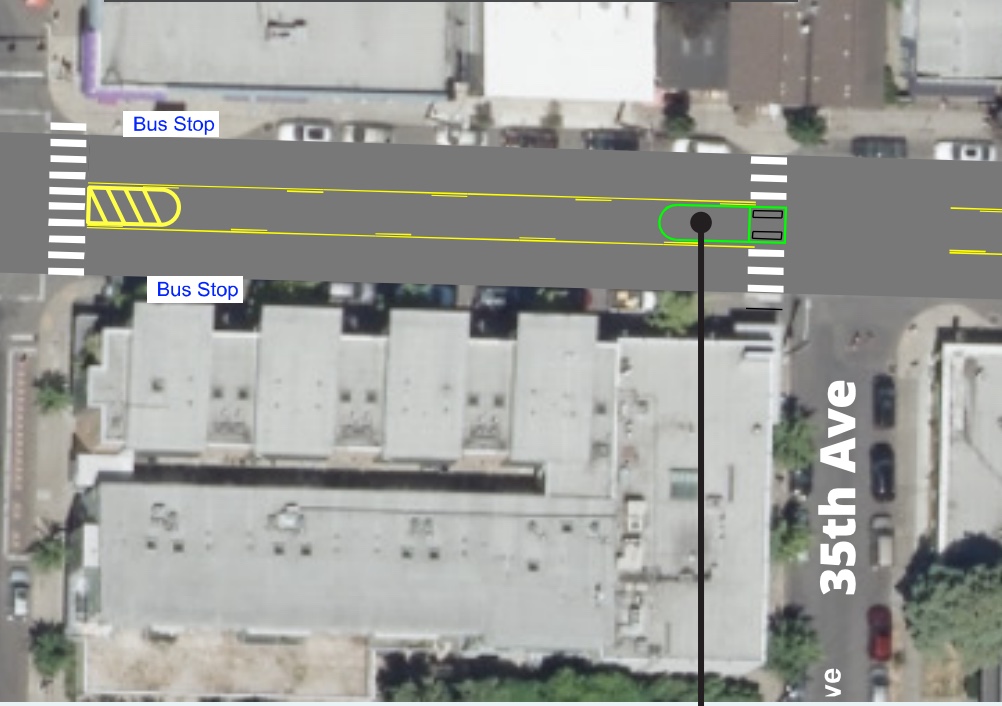
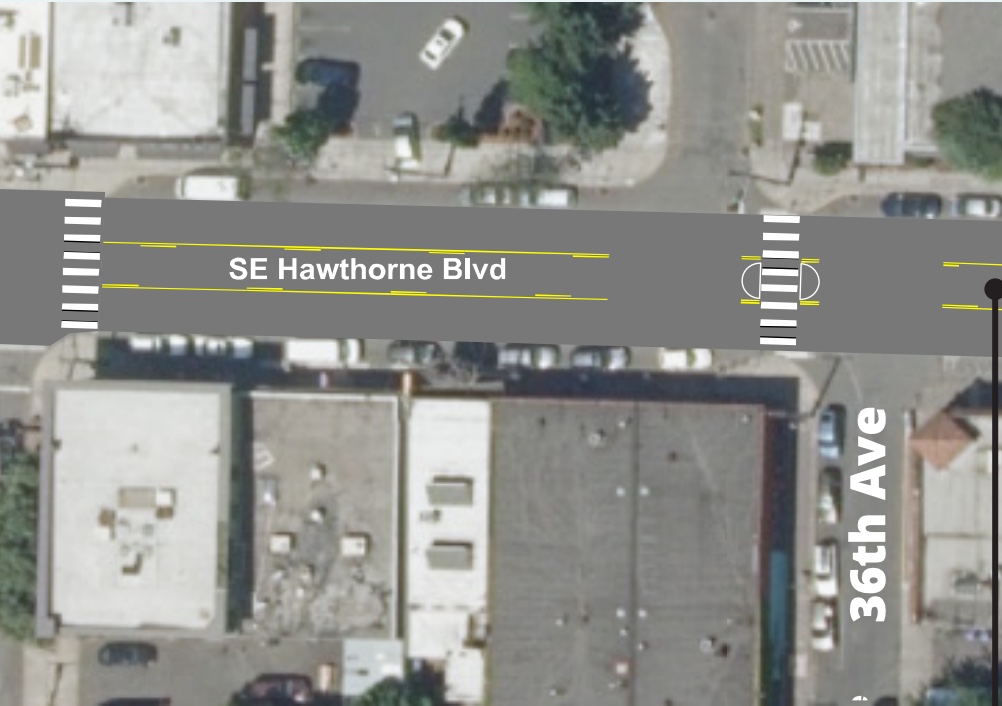

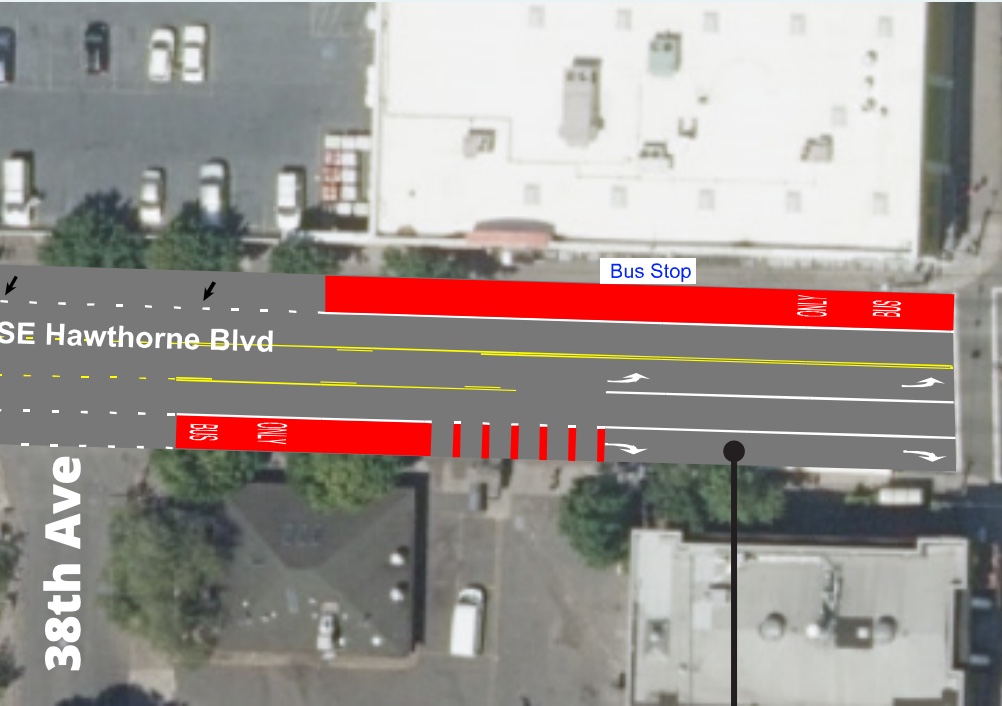

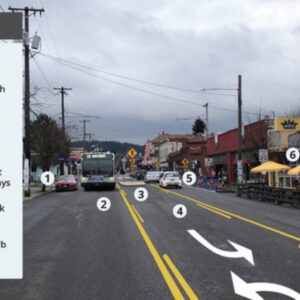
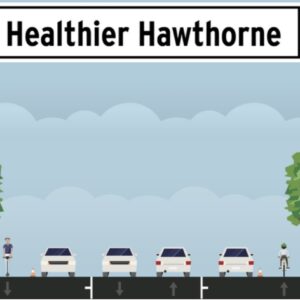
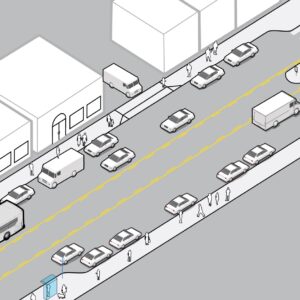
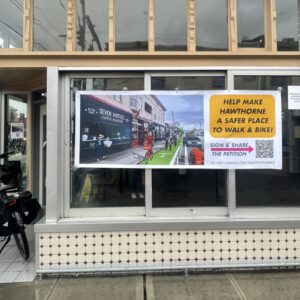
Thanks for reading.
BikePortland has served this community with independent community journalism since 2005. We rely on subscriptions from readers like you to survive. Your financial support is vital in keeping this valuable resource alive and well.
Please subscribe today to strengthen and expand our work.
Reading through the report I feel like they’re double counting the benefits of the three lane configuration. Where intersections are offset, they might be able to provide left turn pockets and refuge islands. However I don’t see how that’s possible at any of the unsignalized straight intersections, such as 31st, 32nd, 44th, 45th, 46th, etc. So either they’re creating a two-lane road with the same impact to transit as a two-lane road with bike lanes; or they’re creating a condition where it’s easier for cars to turn, but pedestrians are left crossing three lanes of traffic.
What’s more is that there’s plenty of room for refuge islands (albeit a bit narrower, but still quite nice) in Alternative 3b, as illustrated by PBOT’s own diagram: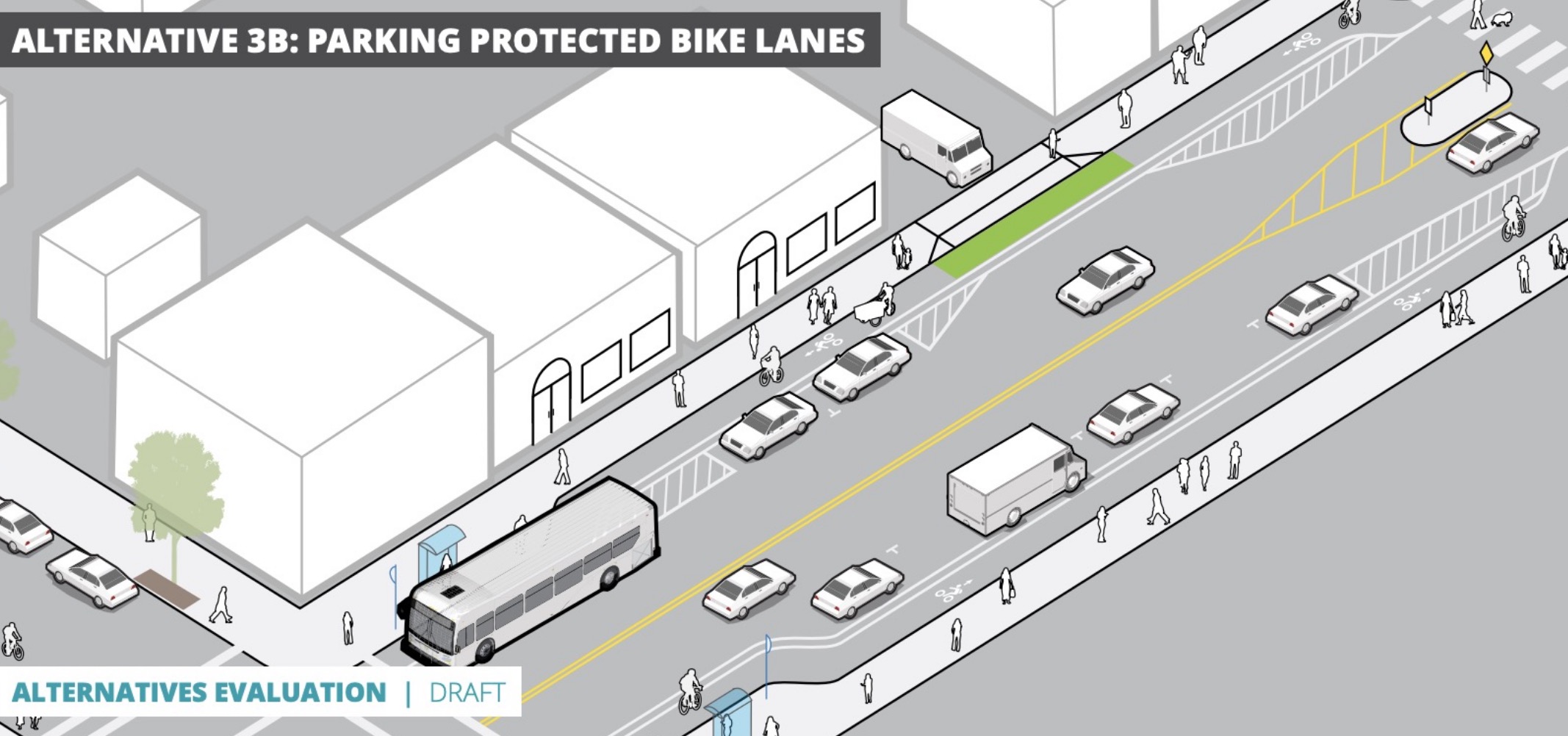
Combined with Division-esque improvements like stop consolidation, bus boarding islands, and signal priority, Alternative 3b would be an absolute slam dunk for all modes, including transit.
Zach,
Is that truly a ‘refuge island’ in the diagram above, because the Zebra crossing is continuous and is not two separate crossings, e.g. one East-bound and one West-bound, with the island in the middle.
This kind of road divider may make a driver believe they do not need to stop, when in fact they need to, when a pedestrian steps onto the crossing on the other side of the road. This type of ambiguous road design is what plagues the city and causes confusion for all users.
They made the Zebra crossing continuous in the diagram for Alternative 2 as well: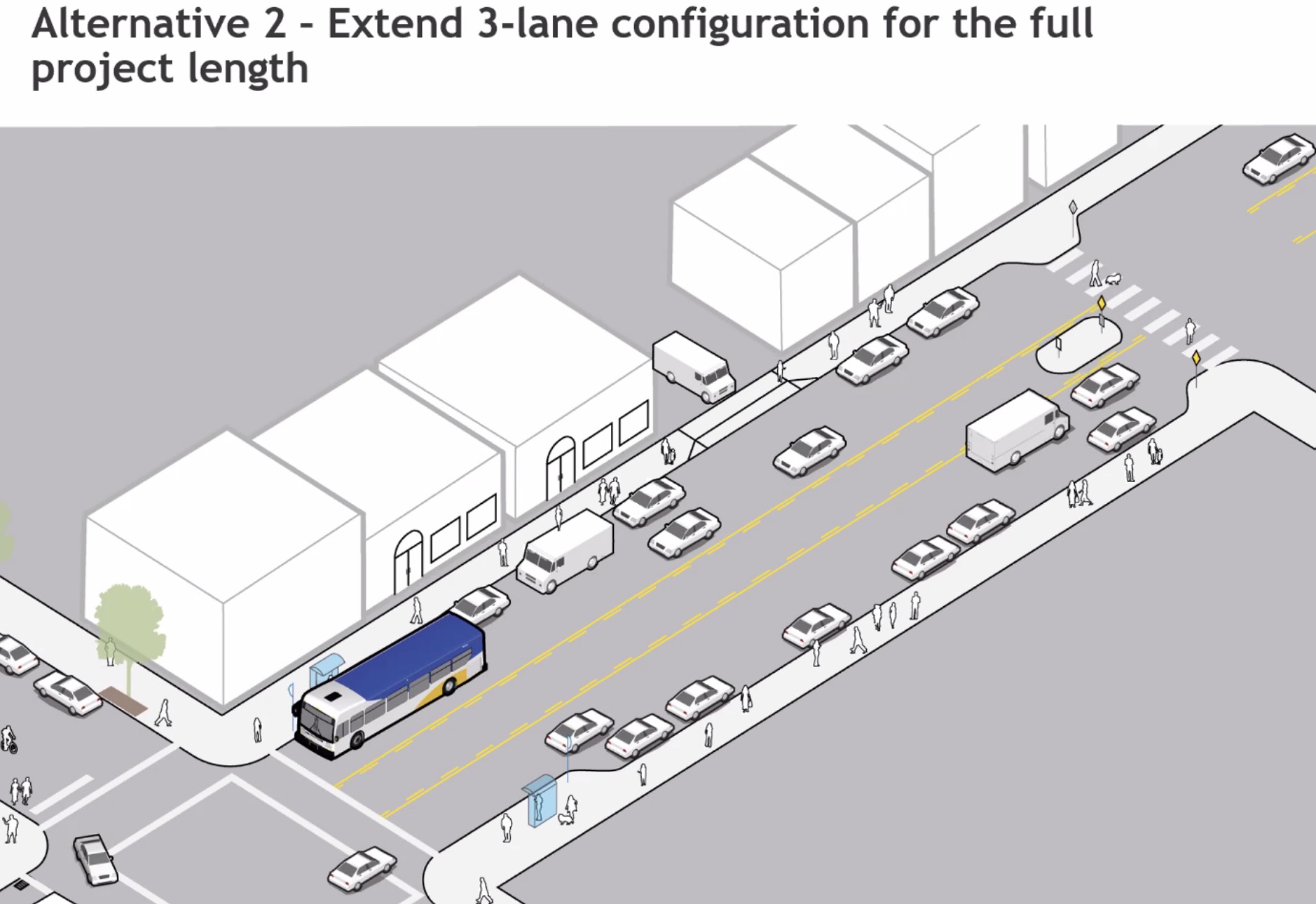
The island should help slow crazed drivers going 90 mph on the center turn lane. However, the PBOT statement “Alternative 2 uses our limited resources wisely, leveraging the investment in repaving while preserving more discretionary funding for other areas of the city with greater infrastructure needs.” would indicate that although Hawthorne has high commercial, local and tourist value, it’s hardly a dangerous street compared to 122nd. PBOT needs the extra saved resources to study its most dangerous streets more and recommend more solutions that will subsequently not be funded nor implemented.
This Hawthorne project is for 24th to Cesar Chavez, and there’s a separate project from the river to 12th.
So does that really mean they’re going to leave the two-narrow-lanes-both-ways striping from 12th to 24th in place? That section along Ladd’s Addition is the worst bit — and (as Jonathan pointed out this morning) historically the place where bicyclists were originally promised a sharrow in order to climb that hill going EB.
If the current plans are really unchangeable now, is there a chance we could transfer some of the momentum of Healthier Hawthorne to work on at least giving us some better future options for 12th to 24th?
Only if Hardesty is willing to listen. But as far as I can tell from today’s announcement, she seems to think cycling is some niche special interest group that can be pushed to the side streets four blocks away so that cars can continue to dominate the street. If 2,500 signatures and nearly 100 businesses isn’t enough to signify demand, I honestly don’t know what is. Maybe 5,000 signatures would have done the trick?
They seemed to push pretty hard on that graphic (by zip code) of nearby-residents and pass-through commuters supporting option 2. So maybe if we get another chance we go door-to-door to residents (with instructions on filling out a survey) rather than only businesses? Just spitballing here — what you were able to do getting businesses on board was fantastic. But they seem to have moved the goalposts again, and business support alone wasn’t enough.
What’s surprising to me about leaving 12th-24th as is, is that I can’t imagine anyone — individual driver, transit operator, roller or walker — enjoying anything about that stretch currently.
Well, it’s no surprise that everyone who took their survey supported option 2—as Jonathan mentions in the story above, they misleadingly made it seem like bike lanes would be terrible for Equity and Climate goals, and prominently displayed those scores in their survey: https://www.healthierhawthorne.com/blog/equity-and-climate-why-pbots-alternatives-evaluation-report-is-misleading
I just didn’t know how to counter that blow. It was very difficult to convince people to believe my blog post over what PBOT states in their official report (even though the blog post references quotes from an official PBOT document). It was even harder to convince influential Climate/Racial Justice organizations who would have otherwise fully supported the project if they hadn’t been scared off by misleading equity concerns.
The Pave and Paint project managers—Karla Kingley and Zef Wagner—were clearly deadset against bike lanes from the outset, and did everything in their power (e.g. not considering bike lanes in the first place, greenlighting that awful evaluation, and not issuing a new survey with a more fair evaluation) to stack the deck against bike lanes.*
So…Karla and Zef got their way, and I’m genuinely not sure what else I could have done—or could do for a future project. It’s evident that if PBOT project managers don’t want bike lanes for whatever reason, they’re not opposed to making up smart-sounding reasons why bike lanes are bad. I’m open to ideas for how to better counter this in the future.
*Of course, there might be some deeper political forces at play—not to wildly speculate, but I wouldn’t be surprised to learn that the HBBA (or one of their funders) is bribing PBOT official behind the scenes, or something like that. Or maybe PBOT staff are just terrified of death threats, which a planner confided in me at a Pave and Paint open house last March.
Great points.
It’s a political process. You can keep surveying local business and residents, but it’s Lents that has veto power, so you’d be far better off getting them on board. And EPAP and their LUTC while you are about it.
So it was a push poll. They got support for the option they wanted.
I’d say suggesting that PBOT staff engaged in criminal behavior, accepting bribes from a local business association to omit bike lanes from a roadway configuration is the epitome of wild speculation. Didn’t we just witness a painful national example about why it’s not a great idea to start conspiracy theories to explain things that didn’t go our way?
Conspiracy theories aside, in my view, PBOT staff are committing bona fide criminal behavior by choosing to not provide safe micromobility infrastructure on Hawthorne. Here’s my logic:
1) People have been killed—and many more injured—while biking on Hawthorne
2) Safe infrastructure would largely—if not entirely—prevent that from happening in the future
3) Making the decision to not build safe infrastructure to prevent more deaths and injuries is essentially third-degree murder.
FYI: Boston is reconfiguring Tremont Street—a major commercial arterial currently with the same exact lane configuration as Hawthorne—with protected bike lanes and no deadly center turn lane: https://storymaps.arcgis.com/stories/aeef112aceeb493597fb442f1dafdf8b

They’re including major pedestrian improvements like leading pedestrian intervals, raised crosswalks, and median islands. Incredible. PBOT could learn a thing or two from the BTD.
Cambridge legislated mandates for PBLs on any road upgrade a couple years ago. I don’t know if that would fly here, but it’s worth a shot.
I really like those raised crosswalks! Such a good idea in terms of walker safety, controlling driver speed (especially during turns) and lowering maintenance costs (no more puddles at corners).
And in general that presentation you linked to was so compelling — I *wish* PBOT aimed for anything close to that.
I’d recommend taking a look at Penn Street in Pittsburgh as well.
That is a capital project. Much more expensive than what PBOT is doing on Hawthorne now, because it involves changing the sidewalks (at the bulbouts), and adding a lot more new stuff for the protected bike lanes. I live in the Hawthorne area and said in my survey they for now, they should do the best they can with a repaving/restriping project, which means Alternative 2. But that I would strongly support a capital redesign of all of Hawthorne from 12th to 50th that included protected bike lanes.
But with Hawthorne’s current curb lines, it is simply not possible to accommodate all modes *well*, and PBOT’s modal hierarchy for Hawthorne establishes that transit, walking, and curbside uses all take priority over bicycling. As a cyclist who lives in the neighbood, this is the right call! And trying to fit bike lanes into the current project would simply be doing what Portland does all too often: trying to make everyone happy, and so succeeding in doing everything poorly and making no one happy. These wouldn’t be good bike lanes unless nearly all parking is removed, and that is bad for business districts (and even then they wouldn’t actually be protected lanes until more money came through for adding barriers later).
marisheba, when we wait for every project to be a capital design, almost nothing gets done. Every project is an interim project. Despite this project being a “pave and paint”, PBoT could easily use planters and bollards in the near future. Advocates I am sure would be willing to volunteer their time and money to build pedestrian friendly intersections. But PBoT would have to prioritize the space for people. This was the wrong decision by PBoT, and signals that car capacity and parking (not safety) will continue to be the priority of street design as it has always been.
Do you park a car on the street?
This will not help salve disappointment, but the center turn lanes in the road diets often tend to be nice places to ride.
Jesus.
Portland is going to be a case study in how hiding bike lanes from public view results in poor uptake of cycling.
RemindME! 2025
Echoes of what BTA (now The Street Trust) experienced in 1990: “We had become very frustrated trying to convince the City’s transportation department staff that there was a need and a demand for bike facilities, especially on the big streets where there was the most traffic and the most danger for cyclists. They insisted that people didn’t like riding on the main streets (no wonder when they were designed to be dangerous for cyclists!) and it would be better if they used quiet side streets. We insisted that they were required to provide bicycle lanes…”
I assume that much like the st. johns bridge the city is claiming that this work isn’t enough of a redo of the street to trigger the requirement that they provide adequate bicycle facilities. There was a time when the BTA would have sued to fix this, but I don’t see the street trust even putting forth a mild level of pushback.
The city needs to be more forthright about the fact that they are creating a situation that they know will lead to severe conflict. We have seen several people on bicycles intentionally struck by people driving cars already this year and this alignment will be a flashpoint for road rage. I rode hawthorne from the bridge out to 50th today and I had no problems with road rage, why because anyone in a car could simply move over to the left lane and safely go around me. With the new alignment cyclists will be forced to share a lane with motor vehicles and buses that has a speed limit that is higher than the speed most of us ride uphill. This is going to lead to a combination of unsafe passing and road rage. I can’t see this shared lane concept working with a speed limit of more than 15 mph, but the real issue is that it seems like this concern has not even been acknowledged by the city let alone addressed. Their solution is just go ride somewhere else, which doesn’t seem to have been an answer considered for any other mode.
They did the same thing on SE Division, and drove a lot of businesses under due to all the construction that blocked access. Plus there are a lot of other streets that are more in need of repaving than Hawthorne. You can restripe anytime, just don’t use the grinder to remove the old markings, it’s worse than studded tires on the road surface.
Disappointed, but better than nothing.
East of Chavez—a pedestrian-unfriendly stretch with many failing businesses that could desperately use a more “neighborhood street” treatment—it literally is nothing.
Sounds like a lot of hot air coming from PBOT (110 pages worth?!). Any time they don’t want to install bike infra they are always going to point at the expected delays which that *might* cause.
The fact that the bus riders they are so concerned about don’t even live in the neighborhood is just an added insult.
Frankly, most of the SOVs crowding Hawthorne aren’t driven by people from the neighborhood either, that fact was well established in the 1990 studies.
So in essence PBOT is choosing to prioritize two modes – driving and transit – whose users are demonstrably primarily from outside the neighborhood, over two other modes – walking and cycling – which primarily have local neighborhood sources.
Howe much more ass-backwards can their logic get?
One thing that jumps out at me when looking at these maps is that there are no parallel (east/west) roads within 3 blocks Hawthorne that go all the way through the corridor. This means that useful parallel routes are really far out of the way from the commercial corridor. I wonder if repurposing that center lane into a 2-way cycletrack should have been considered.
How many people are really turning left on Hawthorne aside from at 39th? I really don’t see a lot of cars turning at the other intersections.
This whole thing is REALLY disappointing with the city. I’ve been waiting 20 years for bike lanes on this street.